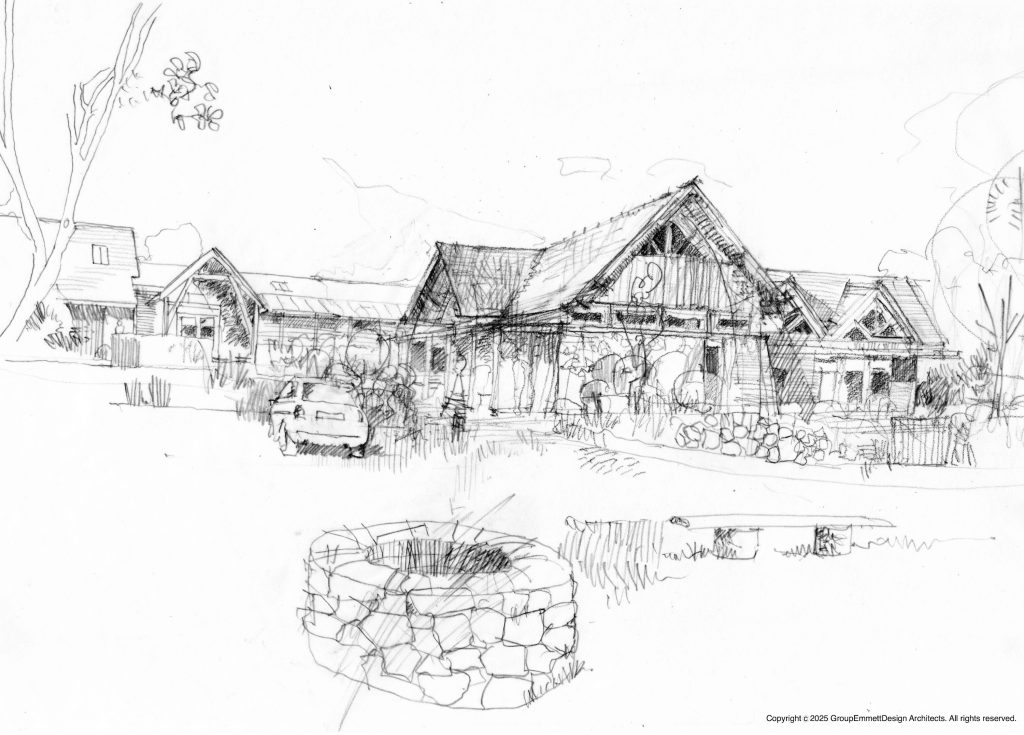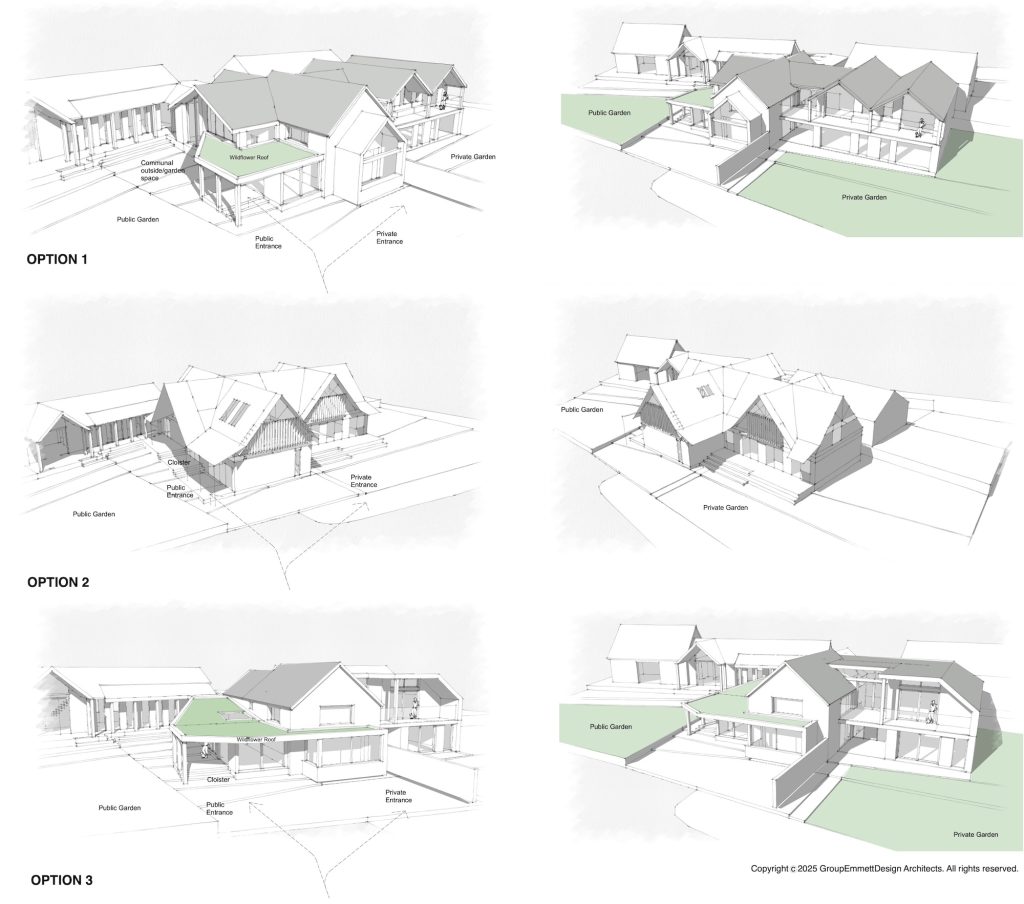When most new clients first contact us, they often say: “We just need some drawings for planning.”
It’s an entirely fair assumption – but as every project develops, it quickly becomes clear that architectural design involves much more than producing drawings. A successful home extension or new build relies on a structured process that takes you from first ideas through to a completed building that is safe, compliant and beautifully executed.
To help demystify the process, we often explain it through the journey of a typical client – a family looking to extend their home in Devon – guided by the RIBA Plan of Work, the framework used by architects across the UK.
Defining the Brief and Understanding the Site
Our first meetings are about understanding you and your home. We discuss how you live, what works, and what doesn’t – whether you need more family space, better natural light, or a stronger connection to the garden.
We also assess the site conditions, the existing building and its setting, as well as your aspirations and budget. These early discussions lead to a clear project brief and an understanding of what may be achievable within planning or permitted development rights.
Why Planning or Permitted Development Matters
Most domestic projects in the UK require some form of planning approval before work can begin. This might take the form of a full planning application, or your proposal might fall within permitted development rights – a set of allowances that let you carry out certain small-scale works without formal planning consent.
However, there are important exceptions. If your property is listed, sits within a conservation area, or lies within a National Landscape (previously known as an Area of Outstanding Natural Beauty), additional planning controls apply. These designations exist to preserve architectural, historic and landscape character, meaning that even minor changes can require planning permission or listed building consent.
For example:
Understanding these layers of policy early on is crucial. At Group Emmett Design Architects, we carry out detailed background research and liaise with local planning authorities, conservation officers and other specialists as required.
For projects involving heritage or environmental sensitivity, we often engage the services of an independent heritage consultant or planning consultant. Their specialist expertise helps navigate complex planning frameworks and strengthen applications where heritage significance or landscape impact must be clearly demonstrated.
We coordinate this input and integrate it into your design and supporting documentation, ensuring your submission is robust, accurate and well-considered.
Our role is to guide you through the process — clarifying what permissions are needed, preparing all drawings and supporting statements, managing submissions, and handling correspondence with the council throughout. This level of support removes uncertainty and helps your project move smoothly through the approval stages.
Concept and Developed Design
Once the brief is agreed and planning constraints are understood, we move into concept design. This is the creative phase where ideas begin to take shape — exploring layout options, materials, light and spatial flow.
Through sketches, 3D visualisations and plan options, we test how your home can work better for you while responding sensitively to its setting — particularly important for heritage buildings or those within protected landscapes.
After review and refinement, the preferred design is developed into a coordinated set of drawings suitable for planning submission. We handle the process from start to finish, keeping you informed at every stage.
Technical Design and Building Regulations
Once planning approval (or permitted development confirmation) is secured, we move into the technical design phase – the stage that turns ideas into a buildable reality.
Every building project in the UK must comply with the Building Regulations, which cover safety, structure, fire protection, insulation, ventilation, drainage and energy performance. These regulations ensure that all construction work is safe, healthy and efficient.
We prepare and submit a detailed Building Regulations package, including construction drawings, performance specifications and structural coordination. This ensures compliance and provides the technical clarity your builder needs to construct the design accurately and confidently.
Why Detailed Drawings Matter
Planning drawings show what your project will look like. Technical drawings explain how it will be built — and that distinction is vital.
Detailed, coordinated information brings real benefits:
This stage is where the groundwork pays off – transforming a planning-approved vision into a clear, buildable design that reduces risk for everyone involved.
Construction and On-Site Support
Once a contractor is appointed, we can continue to support the project during construction – reviewing progress, answering technical queries, and managing any necessary adjustments.
For smaller domestic projects, some clients choose to conclude our services at the end of this stage. With a well-prepared technical package and a competent builder, the project can often proceed without full architectural administration.
However, for more complex, heritage or bespoke projects, keeping the architect involved through to completion can be extremely valuable. Maintaining the architect’s involvement provides consistency throughout the build, ensuring the original design intent is properly realised. It also allows us to respond quickly to on-site questions, resolve unforeseen issues, and help the contractor and client make informed decisions as the work progresses. This continuity helps maintain quality, control costs, and keep the project running smoothly to completion.
A Transparent, Structured and Supportive Process
We simplify the RIBA framework into two main phases for domestic clients:
The remaining portion may cover on-site support, inspections and completion assistance, depending on your project’s needs.
This structured, transparent approach gives you flexibility and confidence at every stage — from the first sketch to the day you move in.
In Summary
Understanding the RIBA design stages — and the difference between planning approval and Building Regulations — helps you see how each step adds value, protects your investment, and ensures a smoother, more successful build.
At Group Emmett Design Architects, we guide you through every step:
Our role is to make the process clear, collaborative and rewarding — turning your ideas into a home that performs beautifully, respects its setting, and enhances the way you live.
If you’re unsure whether your project needs planning permission, listed building consent, or lies within a National Landscape, we’d be happy to help. Contact Group Emmett Design Architects to discuss your ideas and learn how we can guide you from first concepts through to completion.


